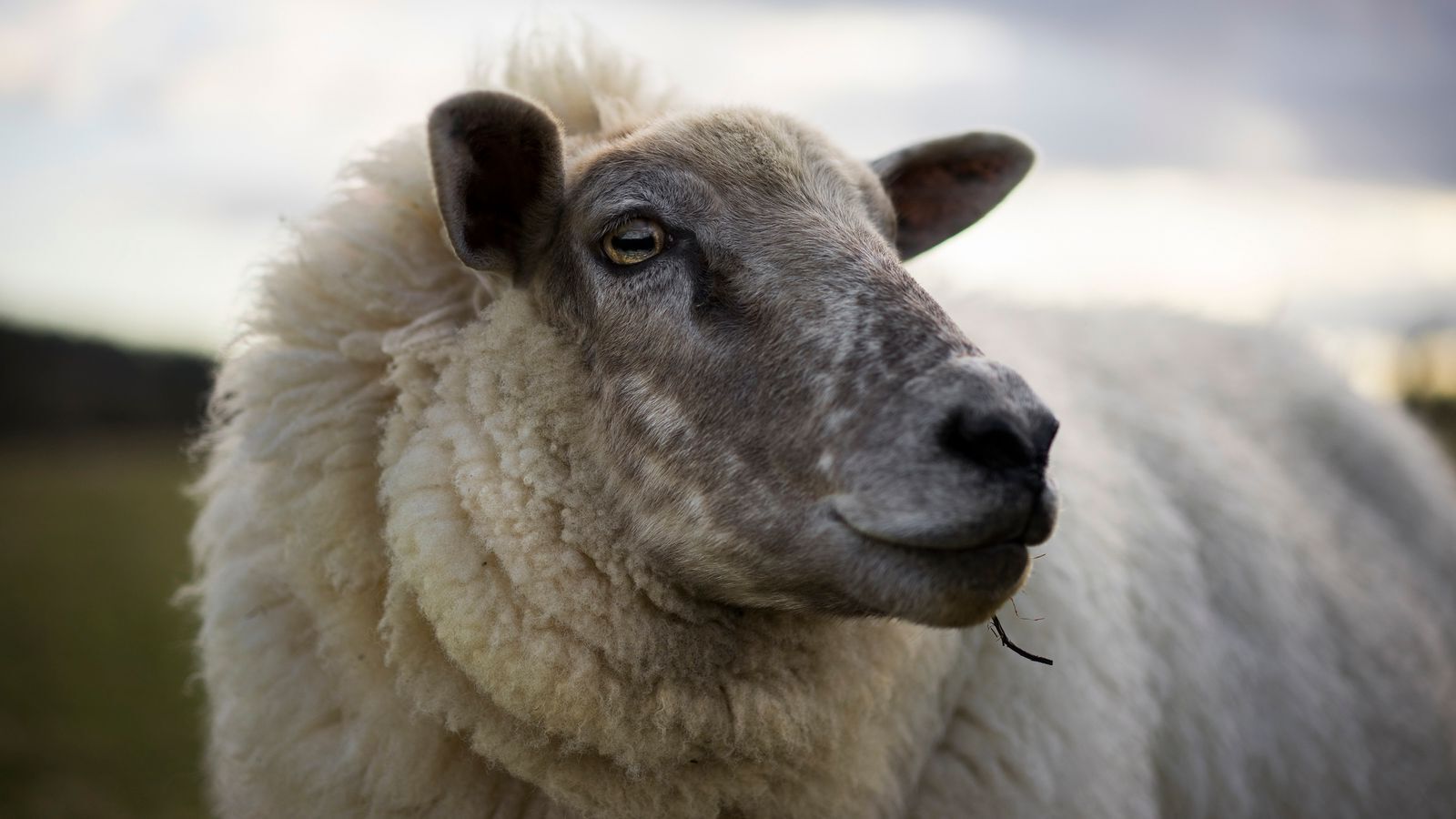
What is Bluetongue Virus? Bluetongue virus (BTV) is a serious disease affecting domestic and wild ruminants like sheep, goats, and cattle. Spread by biting insects, mainly Culicoides midges, it causes symptoms such as fever, swelling, and even a blue tongue. This virus is non-contagious, meaning it doesn't spread directly between animals. However, its impact is significant, leading to economic losses due to decreased milk production, reproductive issues, and trade restrictions. With at least 24 known serotypes, BTV presents a complex challenge for farmers and veterinarians worldwide. Understanding its transmission, symptoms, and control measures is crucial for managing this disease effectively.
What is Bluetongue Virus?
Bluetongue virus (BTV) is a serious disease affecting domestic and wild ruminants. Understanding its nature and impact is crucial for managing and preventing outbreaks.
-
Definition and Cause: Bluetongue virus is a viral disease spread by biting insects, primarily Culicoides midges. It affects ruminants, particularly sheep, causing various symptoms and economic losses.
-
Global Distribution: The disease occurs worldwide, with significant outbreaks reported in tropical and subtropical regions. It has also been detected in colder areas, such as Europe, where it caused severe outbreaks in 2006 and 2015.
-
Species Affected: The primary hosts of BTV are sheep, goats, and cattle. However, it can also affect other ruminants like white-tailed deer, pronghorn antelope, and bighorn sheep.
Symptoms and Effects on Animals
Bluetongue virus manifests through various symptoms, impacting the health and productivity of infected animals.
-
Symptoms: Infected animals may exhibit fever, excessive salivation, depression, difficulty breathing, nasal discharge, and reddened and ulcerated muzzle, lips, and ears. The lips and tongue can become very swollen, causing the tongue to stick out from the mouth, often with a bluish color.
-
Reproductive Issues: Pregnant ewes infected during the first trimester may experience reproductive problems such as resorption, abortion, or birth of "dummy lambs." The hooves of infected animals can be very painful, making them reluctant to move, and in some cases, the hooves may slough off.
Transmission and Control Measures
Understanding how BTV spreads and the methods to control it is vital for preventing outbreaks.
-
Transmission: The virus is transmitted through the bites of Culicoides midges. Other biting insects like ticks or sheep keds can also transfer the virus. However, the virus is not contagious and is not spread by contact between animals.
-
Vector Control: Implementing insect control and prevention measures is crucial to reduce the spread of the disease. This includes destroying insect habitats, using insecticides, and moving animals into barns during peak vector activity times (dusk until dawn).
-
Vaccination: Vaccines are available for animals deemed at high risk of contracting bluetongue. However, these vaccines are not without risk and should be used under veterinary guidance.
Economic and Global Impact
Bluetongue virus has significant economic implications, affecting livestock production and international trade.
-
Economic Impact: Bluetongue causes significant economic losses due to reproductive losses, damaged wool, decreased milk production, and restrictions on international trade of livestock and their products.
-
Serotypes: There are at least 24 serotypes of BTV, each containing multiple strains that can differ in virulence. Several atypical serotypes have also been described, which are usually found in asymptomatic animals and seem to be of limited virulence.
-
Genetic Reassortment: Bluetongue viruses can undergo genetic reassortment with each other and with attenuated vaccine strains, producing new variants. This genetic variability can lead to changes in virulence and transmission dynamics.
Diagnostic and Control Measures
Effective diagnosis and control measures are essential for managing BTV outbreaks.
-
Transmission to Fetus: The virus can be transmitted from the dam to the fetus during pregnancy, leading to transplacental transmission (TPT). This has been observed with both live-attenuated vaccine strains and wild-type/field strains of BTV.
-
Diagnostic Methods: Diagnosis of BTV involves sensitive tests such as reverse transcription polymerase chain reaction (RT-PCR), agar gel immunodiffusion assay, and competitive enzyme-linked immunosorbent assay (ELISA). These tests are recommended by the World Organization for Animal Health (OIE) for international trade.
-
Control Measures: Control measures include mass vaccination, serological and entomological surveillance, forming restriction zones, and sentinel programs. These measures help in monitoring and controlling the spread of the virus.
Regional Prevalence and Historical Outbreaks
BTV prevalence varies by region, and historical outbreaks provide insights into its impact and control.
-
Risk Factors: Older cattle are more likely to be infected with BTV compared to young cattle. Application of preventive measures such as spraying or dipping with insecticide protects cattle against BTV infection. Vector control measures decrease the odds for BTV seropositivity.
-
Prevalence in India: In India, 23 serotypes of BTV have been reported. The disease causes significant socio-economic losses, and a pentavalent inactivated, adjuvanted vaccine is administered to control BT. Recombinant vaccines with DIVA strategies are urgently needed to combat this disease.
-
Prevalence in Sudan: In Sudan, BTV serotypes 1, 2, 4, 5, and 16 are enzootic. The seasonal incidence of BTV is predictable and related to the rainy season. The principal vector of BTV in Sudan is Culicoides imicola.
-
Clinical Cases: Clinical cases of BTV range from sporadic to widespread and mild to rapidly fatal. In sheep, the disease can be severe, while in cattle, it is typically asymptomatic. However, indirect losses associated with loss of body weight and condition, drop in milk production, and poor subsequent reproductive performance are significant.
-
International Trade Restrictions: The presence of BTV in livestock and their products leads to restrictions on international trade. Animals from BTV-endemic countries must be certified free of infection by conventional virus isolation or serology to avoid trade restrictions.
-
Historical Outbreaks: The 2006 outbreak of BTV-8 in Europe was extensive and severe, affecting multiple species not previously known to be susceptible. Although the virus disappeared after vaccination programs, it re-emerged in France in 2015 with milder effects.
Vaccine Development and Pathogenesis
Ongoing research and development of vaccines are crucial for controlling BTV, along with understanding its pathogenesis.
-
Vaccine Development: The development of vaccines is crucial for controlling BTV. Live-attenuated vaccines have been used, but there is a need for more effective and safer vaccines, particularly those with DIVA (Differentiating Infected from Vaccinated Animals) strategies.
-
Pathogenesis: The pathogenesis of BTV involves the virus entering the host through the bite of an infected midge. The virus then replicates in the host's cells, leading to the production of viral particles and the manifestation of clinical symptoms.
-
Immune Response: The immune response to BTV involves both humoral and cellular immunity. Vaccination stimulates the production of antibodies that neutralize the virus, while cellular immunity helps in clearing the virus from the host.
-
Experimental Studies: Experimental studies have shown that transplacental transmission of BTV can occur with both field and rescued strains of the virus. This highlights the importance of monitoring pregnant animals for BTV infection.
-
Public Health Impact: Bluetongue virus does not pose a significant threat to human health. However, the economic impact of the disease on livestock production and trade is substantial, making it a critical issue for veterinary public health.
Final Thoughts on Bluetongue Virus
Bluetongue virus (BTV) is a serious concern for livestock worldwide. Affecting mainly sheep, goats, and cattle, it spreads through biting insects like Culicoides midges. Symptoms range from fever and swollen tongues to severe reproductive issues. With at least 24 serotypes, BTV's genetic variability complicates control efforts. Vaccination and vector control are key strategies, though vaccines carry risks and should be used under veterinary guidance. Economic impacts are significant, affecting trade and livestock productivity. Diagnostic methods like RT-PCR and ELISA are crucial for detecting and managing outbreaks. While BTV doesn't threaten human health, its impact on livestock and trade makes it a critical issue. Understanding its transmission, symptoms, and control measures can help mitigate its effects. Stay informed and proactive to protect livestock from this challenging virus.
Was this page helpful?
Our commitment to delivering trustworthy and engaging content is at the heart of what we do. Each fact on our site is contributed by real users like you, bringing a wealth of diverse insights and information. To ensure the highest standards of accuracy and reliability, our dedicated editors meticulously review each submission. This process guarantees that the facts we share are not only fascinating but also credible. Trust in our commitment to quality and authenticity as you explore and learn with us.


